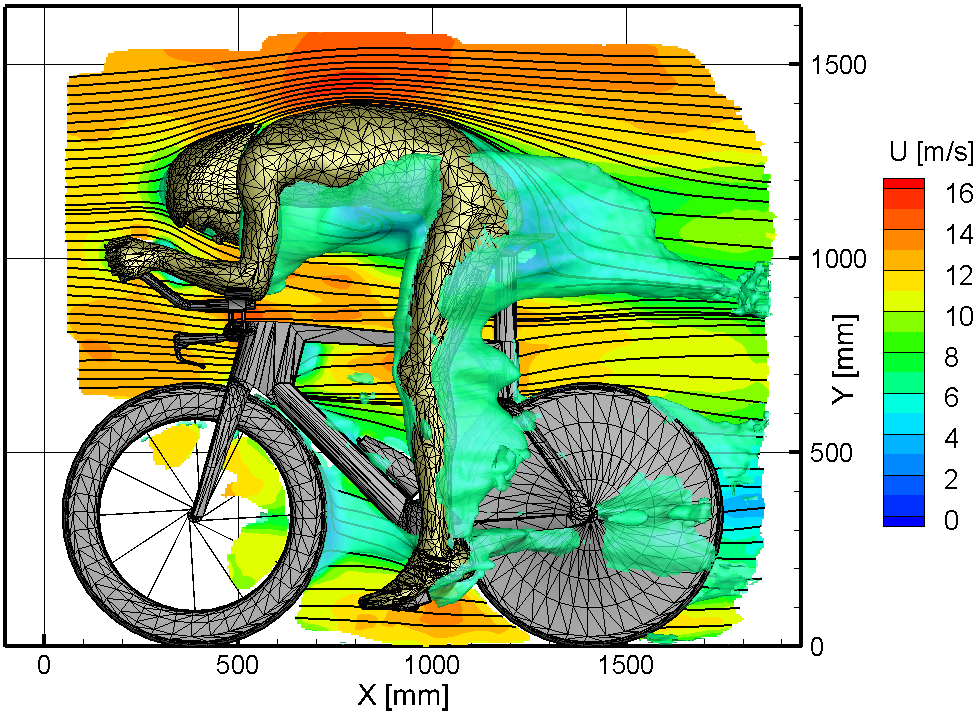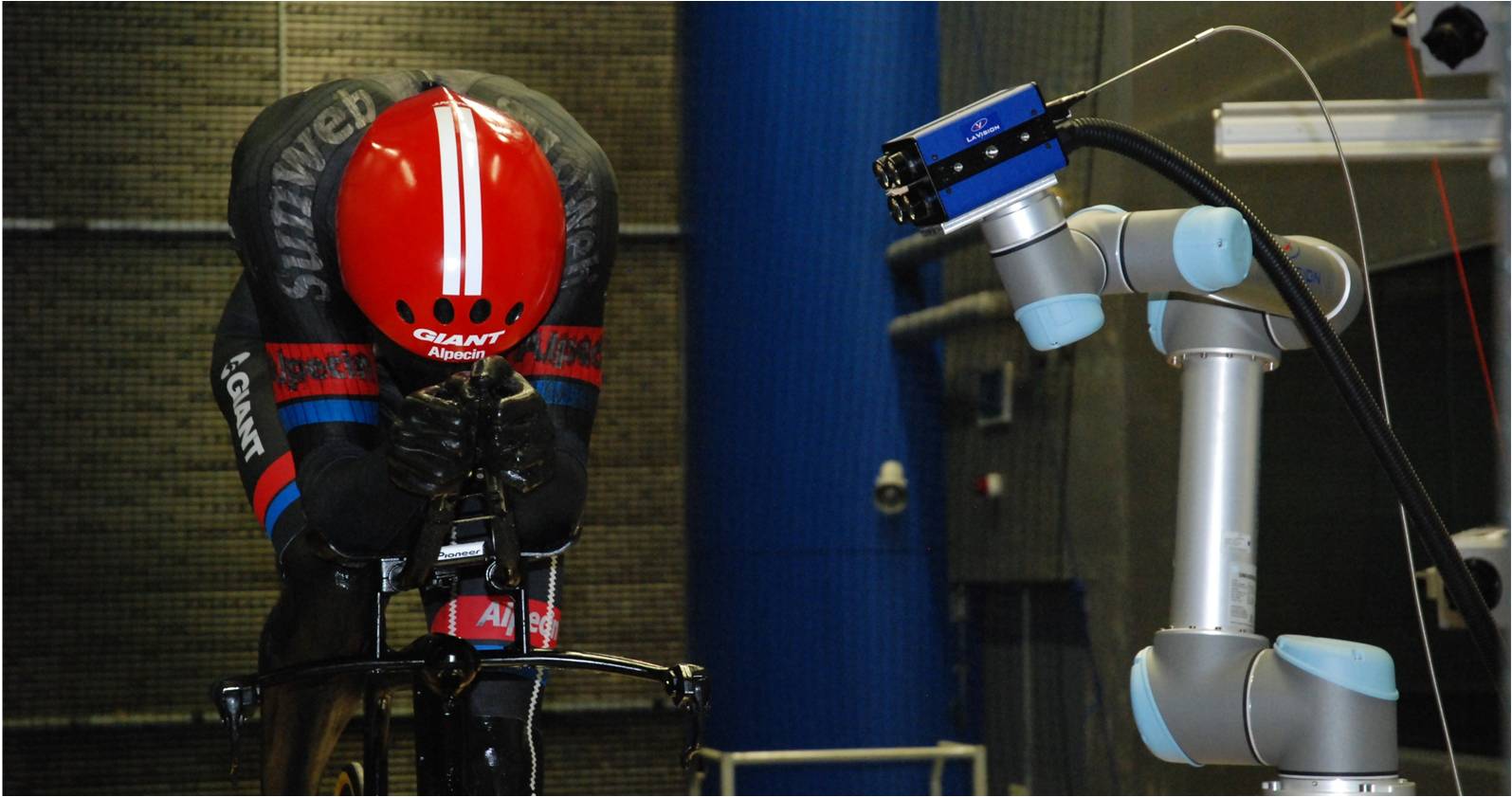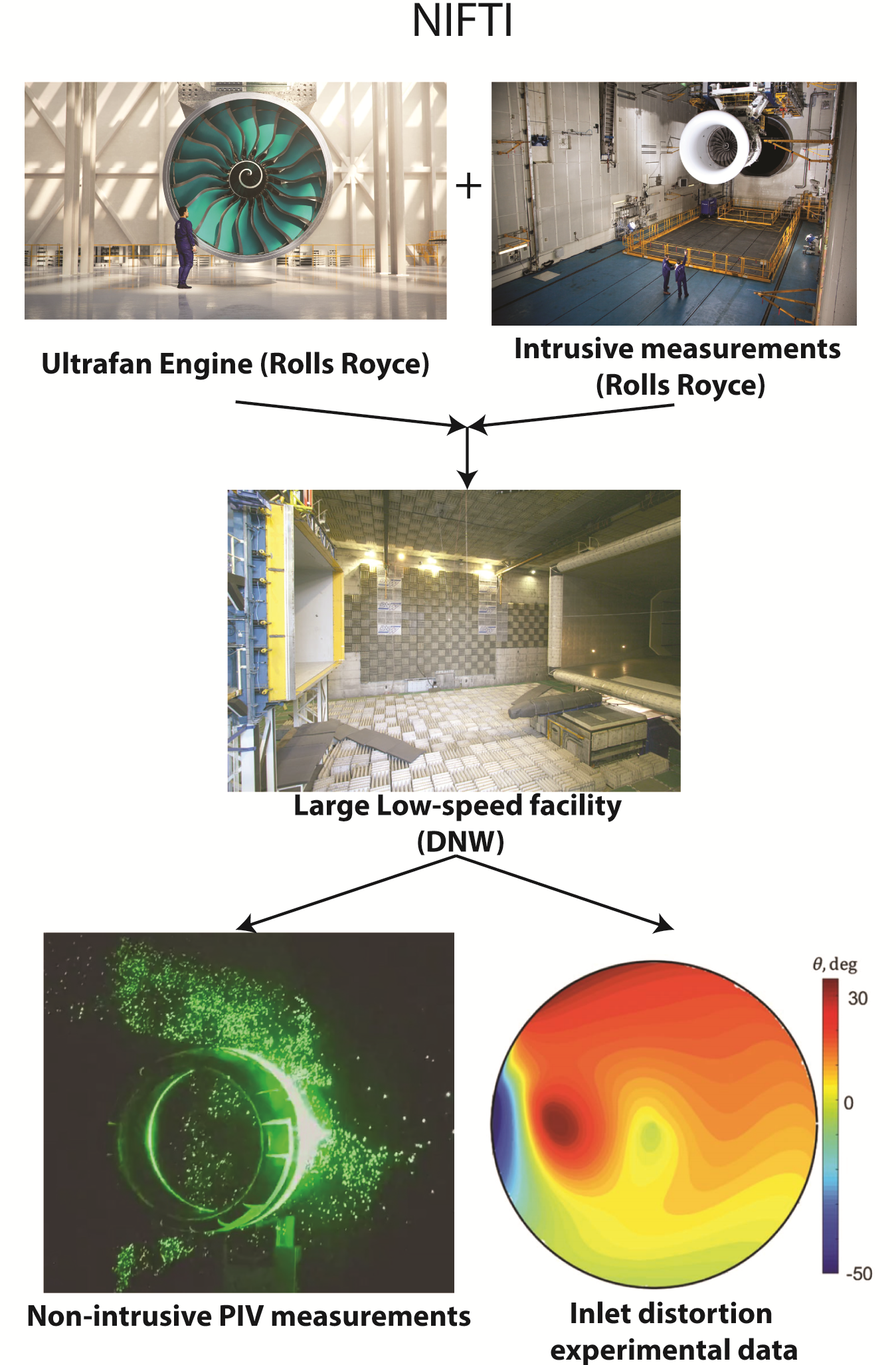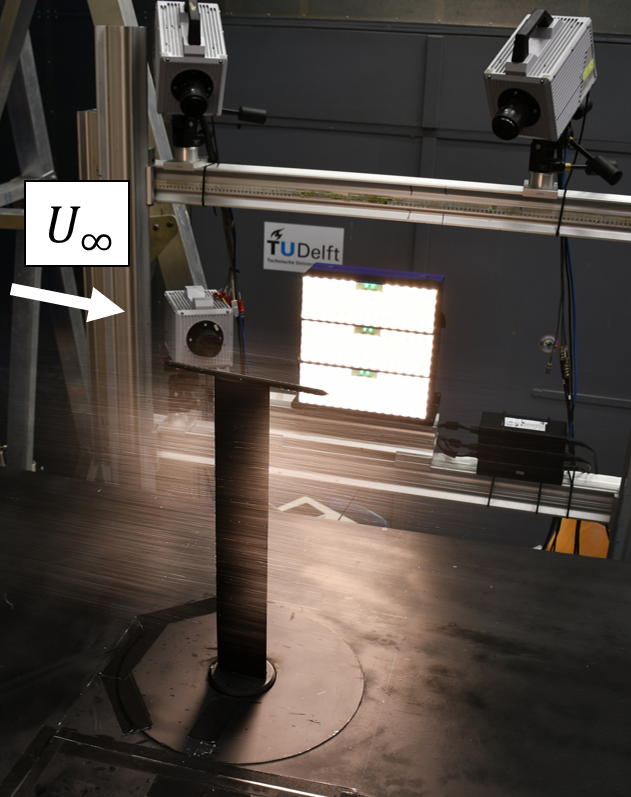Quantative Flow Visualization
Particle image velocimetry (PIV) merges the visual aspect of qualitative flow measurement techniques, such as smoke- and oil- flow visualizations, with the rigorous quantification of air flow velocity as known from classical instrumentation, such as pressure probes.
Our group is specialized in the development and application of PIV techniques, contributing in their evolution towards an integrated measurement tool for aerodynamic investigations. Examples include, but are not limited to, the invention of tomographic PIV for 3D flow analysis, the utilization of PIV data for pressure evaluation, and the development of tracer particles for flow analysis at large scale. Ultimately our aim is to enrich PIV capabilities for flow diagnostics, and thereby, support aerodynamic research and development.
Below you can find brief descriptions of our current research projects in the context of quantitative flow visualization techniques.
Current research projects
Robotic volumetric PIV for aerodynamic analysis at large scale
The dissemination of PIV in industry is limited by the high system complexity and the small measurement volumes that can be achieved. In this project we synthesize advancements in tracer particle technology, imaging hardware, and particle tracking algorithms to compose a robotic PIV system capable of diagnosing low-speed flows in the cubic-meter domain.
The developed system excels in the flow analysis near complex geometries. Based on the recorded tracer particle distribution and motion in the vicinity of 3D objects, we propose two approaches to reconstruct the 3D object shape and the pressure distribution on the model, respectively. In this way, robotic volumetric PIV is suitable for integrated aerodynamic measurements at large scale, including the analysis of flow topology, object geometry and pressure loads.

ir. C. (Constantin) Jux
PhD Candidate
✉ C.Jux@tudelft.nl
Development of experimental techniques for aerodynamic study of industrial flows
In the last decades, Particle Image Velocimetry has become a central pillar of the aerodynamic development in the industrial sector. Whereas PIV techniques are mainly developed in the academic environment, industrial wind tunnels are more and more often equipped with tools to perform PIV measurements. This research is focused on improving the experimental technique specifically in conditions that match the demands of industrial wind tunnels, e.g. in terms of velocity requirements, geometric model complexity and extension of the measureable volumes. Additionally, this project addresses the integration of experimental techniques and numerical simulations, i.e. data assimilation, as a tool to enhance the accuracy and resolution of the obtained flow fields.
The NIFTI project (Non-Intrusive Flow distortion measurements within a Turbofan Intake) works towards facilitating the development and implementation of new testing methodologies for high bypass ratio turbofan engines employing Particle Image Velocimetry (PIV) techniques.

Ir. E. (Edoardo) Saredi
PhD Candidate
✉ E.Saredi@tudelft.nl

Ir. K. (Kushal) Ujjaini Kempaiah
PhD Candidate
✉ K.UjjainiKempaiah@tudelft.nl
The recent development in aircraft propulsion systems has moved towards high bypass ratios and larger fan diameters where a short and slim intake design is necessary to compensate for the additional aerodynamic drag and weight penalties of the increased diameter (Smith 2013). The short intakes cause high levels of unsteady total pressure and velocity distortions, especially under crosswind or angle of attack operations during take-off (Guimaraes et al 2019). Such distortions are expected to adversely affect the engine’s performance, operability, structural integrity, and safety margin with potentially catastrophic consequences for the entire propulsion system. With current practices of aero-engine testing and safety certification relying primarily on intrusive methods (Guimaraes et al 2019), it is imperative that a non-intrusive technique like PIV is applied. The necessity for richer data to aid the understanding of flow distortions that lead to engine stall becomes critical. To aid and facilitate the development of new methodology, the NIFTI project, which includes many partners under the EU Clean Sky 2 initiative, will design and execute the experiments.
Non-intrusive aerodynamic loads determination on flexible wings
The use of state-of-the-art methods for large-scale particle tracking velocimetry (PTV) facilitates the characterization of the unsteady flow field around flexible wings in relevant aeroelastic regimes. This research is concerned with the determination of the aerodynamic loads that act on flexible wings in different flow conditions, based on the flow field measurements obtained with PTV. The goal is to develop the measurement techniques for performing a non-intrusive experimental characterization of the aeroelastic interaction on flexible wings.

Ir. C. (Christoph) Mertens
PhD Candidates
✉ C.Mertens@tudelft.nl
Comprehensive Framework for PIV Uncertainty
Particle Image Velocimetry assists in the understanding of complex flows, aerodynamic certification and validation of numerical simulations. Due to the complexity of the measurement chain, the PIV uncertainty is oftentimes unknown, potentially leading to misjudgements of the flow physics and inability to conduct quantitative validations. To enable unambiguous interpretation of PIV data, PIV Uncertainty Quantification (PIV-UQ) is required.
This research aims at quantifying total PIV uncertainty, i.e. labelling the quality of PIV results by devising a comprehensive framework for uncertainty quantification. The framework shall be general to cover 2D and 3D measurements, compressible and incompressible flow regimes, micro-PIV and large-scale PIV.
Next to the precise quantification of systematic PIV errors, e.g. resulting from peak-locking, methods for uncertainty minimization are developed. The work addresses the joint analysis of systematic uncertainties using the framework of Design of Experiments (DOE) and Analysis of Variances (ANOVA).

S. (Sagar) Adatrao, MSc.
PhD Candidate
✉ S.Adatrao@tudelft.nl
Involved professors

Prof.dr. F. (Fulvio) Scarano
Chairholder
✉ F.Scarano@tudelft.nl

Dr.ir. B.W. (Bas) van Oudheusden
Associate Professor
✉ B.W.van
Oudheusden@tudelft.nl

Dr.ir. F.F.J. (Ferry) Schrijer
Assistant Professor
✉ F.F.J.Schrijer
@tudelft.nl

Dr. A. (Andrea) Sciacchitano
Assistant Professor
✉ A.Sciacchitano
@tudelft.nl





